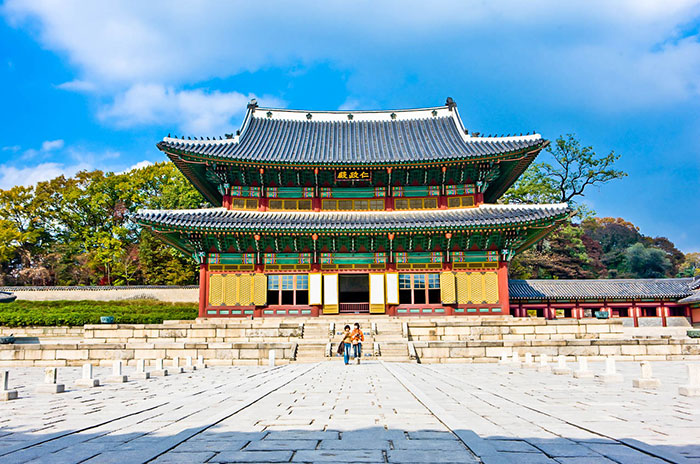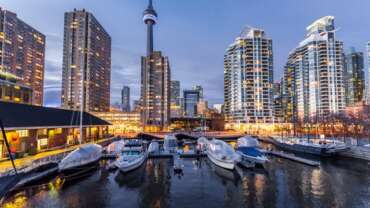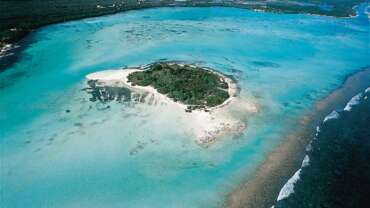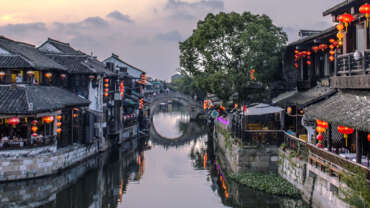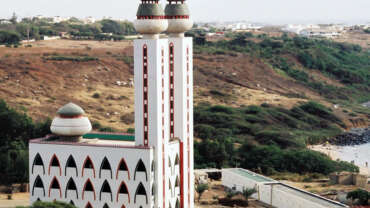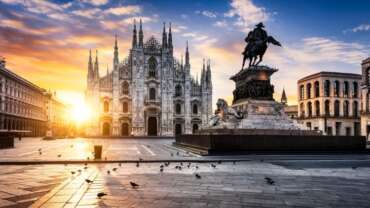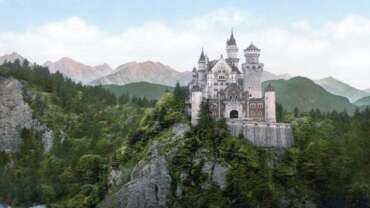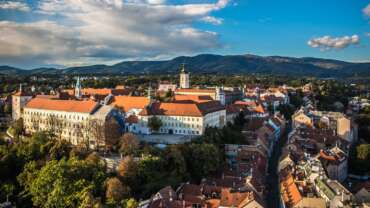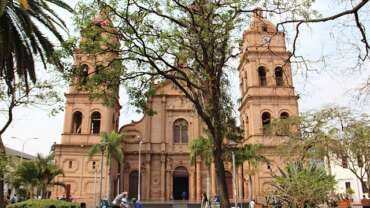South Korea - Imagine your Korea
South Korea, an East Asian nation on the southern half of the Korean Peninsula, shares one of the world’s most heavily militarized borders with North Korea. It’s equally known for its green, hilly countryside dotted with cherry trees and centuries-old Buddhist temples, plus its coastal fishing villages, sub-tropical islands and high-tech cities such as Seoul, the capital.
South Korea boasts abundant tourist attractions. Tourists can experience distinctive harmony between historical cultural heritage and modern culture. With these preserved local identities, tourists can also explore and enjoy local cultures, natural environments, and unique food.
Among popular tourist attractions in South Korea, modern values are often projected onto historic cultural heritage, or conversely, traditional elements are added to modern spaces. They serve not only as precious cultural heritage and vibrant living spaces for Koreans but also as a starting point for foreigners to visit Korea.
History of South Korea
South Korea to 1961
The First Republic
The First Republic, established in August 1948, adopted a presidential system, and Syngman Rhee was subsequently elected its first president. South Korea also adopted a National Security Law, which effectively prohibited groups that opposed the state or expressions of support for North Korea. Rhee was reelected in August 1952 while the country was at war. Even before the outbreak of the Korean War (1950–53), there had been a serious conflict between Rhee and the opposition-dominated National Assembly that had elected him in 1948. The dispute involved a constitutional amendment bill that the opposition introduced in an attempt to oust Rhee by replacing the presidential system with a parliamentary cabinet system. The bill was defeated, but the dispute continued at Pusan, the wartime provisional capital, where the National Assembly was reconvened.
When the opposition introduced another amendment bill in favour of a parliamentary cabinet system, Rhee in 1952 countered by pushing through a bill that provided for the popular election of the president. Later, in 1954, Rhee succeeded in forcing the National Assembly, then dominated by the ruling party, to pass an amendment that exempted him from what was then a two-term limit on the presidency. Under the revised constitution, Rhee ran successfully for his third term of office in May 1956. His election for the fourth time, in March 1960, was preceded by a period of tension and violence and was followed by accusations that the election had been fraudulent. Massive student demonstrations took place that culminated in a major event on April 19 in which many demonstrators died. Rhee resigned under pressure six days later and fled to exile in Hawaii, where he died in 1965 at age 90.
The Second Republic
The Second Republic, which adopted a parliamentary cabinet system, lasted only nine months. A figurehead president was elected by both houses of the legislature, and power was shifted to the office of Prime Minister Chang Myŏn, who was elected by the lower house by a narrow margin of 10 votes.
The Chang government made some strenuous efforts to initiate reforms. In a society laden with social and economic ills accumulated over a long period of time, however, it failed to cope with the unstable situation created by a violent political change. Rampant political factionalism only made the situation worse. With the ultimate source of authority now vested in the office of the prime minister, all factions, conservative and moderate, engaged in constant maneuvering to win over a group of independents in order to form a majority in the legislature. Before Chang had time to launch a full program of economic reform, the leadership of the ruling Democratic Party was crippled by factional strife within its ranks.
Military rule
The 1961 coup
On May 16, 1961, the military seized power through a carefully engineered coup d’état, ushering in a new phase of postliberation Korean politics. The military junta, led by General Park Chung-Hee, took over the government machinery, dissolved the National Assembly, and imposed a strict ban on political activity. The country was placed under martial law, and the Supreme Council for National Reconstruction (SCNR), headed by Park, took the reins of government and began instituting a series of reforms.
In November 1962 the SCNR made public a constitutional amendment bill that provided for a strong president and a weak, single-chamber National Assembly. The bill was approved by a national referendum one month later. A series of events unfolded in the first half of 1963. In February Park announced that he would not take part in the civilian government to be formed later in the year if civilian political leaders chose to uphold a nine-point “political stabilization proposal.” However, as a result of bitter turbulence within the ruling junta and a chaotic situation created by the proliferation of minor political parties, Park soon changed his mind and proposed that military rule be extended for four years. The proposal met vigorous opposition from civilian political leaders, but some 160 military commanders, most of them generals, supported the extension. In April, Park, under considerable domestic and international pressure (particularly from the United States), announced a plan for holding elections toward the end of the year. Park was named presidential candidate of the newly formed Democratic Republican Party (DRP) in late May.
The Third Republic
The election for president of the Third Republic took place on October 15, 1963. Park narrowly defeated the opposition candidate, Yun Po-Sŏn, former president (1960–62) of the Second Republic, who had remained in office as a figurehead at the request of the junta to provide constitutional continuity for the military government. When political activity was permitted to resume, Yun led the mustering opposition groups and became the presidential candidate of the Civil Rule Party. In May 1967 Park was elected to his second term of office, and the DRP won a large majority in the National Assembly. Members of the opposition New Democratic Party (NDP), whose head was the twice-defeated Yun, claimed fraud and refused for some time to take their seats in the National Assembly.
During his second term, President Park faced the constitutional provision that limited the president to two consecutive four-year terms. Amid extensive political turmoil created by the demonstrations of opposition politicians and students, the DRP members of the legislature passed a constitutional amendment that would make a president eligible for three consecutive four-year terms. The amendment was approved by a national referendum in October 1969. In the presidential elections held in April 1971, Park defeated Kim Dae-Jung of the NDP; however, the NDP made substantial gains, especially in major urban areas, securing 89 seats in the National Assembly election as against 113 seats won by the ruling DRP.
The Yushin order (Fourth Republic)
In December 1971, shortly after his inauguration to a third presidential term, Park declared a state of national emergency, and 10 months later (October 1972) he suspended the constitution and dissolved the legislature. A new constitution, which would permit the reelection of the president for an unlimited number of six-year terms, was promulgated in December, launching the Fourth Republic.
The institutional framework of the Yushin (“Revitalization Reform”) order departed radically from the Third Republic. The National Conference for Unification (NCU) was created “to pursue peaceful unification of the fatherland.” The conference was to be a body of between 2,000 and 5,000 members who were directly elected by the voters for a six-year term. The president was the chairman of the conference. Until 1987 the NCU was charged with the power to elect the president, and under this arrangement, Park was elected without opposition in 1972 and was reelected in 1978.
Political unrest increased following the August 1973 kidnapping from Tokyo to Seoul of Kim Dae-Jung—who had been conducting an antigovernment campaign in the United States and Japan—by agents of the Korean Central Intelligence Agency (KCIA; now the National Intelligence Service). From August 1978 the opposition movement became stronger. The expulsion from the National Assembly of the new NDP leader Kim Young-Sam in early October 1979 escalated what had already been growing political tensions between the government and opposition leaders during the year into a major national crisis. Antigovernment riots broke out in Pusan and Masan and were suppressed by government troops. The crisis culminated on October 26, when President Park was assassinated by Kim Jae-Kyu, his longtime friend and director of the KCIA. Prime Minister Choi Kyu-Hah became acting president under the Yushin constitution and was formally elected president in December by the NCU.
In the meantime, the country was placed under strict military rule by Gen. Chun Doo-Hwan. An armed uprising of students and other citizens in Kwangju in May 1980, calling for the full restoration of democracy, was ruthlessly suppressed by the military junta, with hundreds of civilian deaths. That month the military did away with all trappings of civilian government, extended martial law, again banned all political activity, and closed universities and colleges.
Restoration of civilian government
The Fifth Republic
In August 1980 Chun Doo-Hwan was elected president by the NCU. A new constitution, under which the president was limited to one seven-year term, was approved in October, ushering in the Fifth Republic. Martial law was lifted in January 1981, and in February Chun was elected president under the new constitution. As parties were again allowed to operate, a new ruling party, the Democratic Justice Party (DJP), was formed by former members of the DRP and NDP. Chun’s administration, however, had to endure a series of scandals and incidents—most notably the bombing by North Koreans in Rangoon, Burma (now Yangon, Myanmar), in October 1983 that killed several members of the South Korean government. Meanwhile, in 1980 the strongly anticommunist Ronald Reagan was elected president in the United States, ushering in closer U.S.–South Korean ties and cooler U.S.–North Korean relations.
By 1987 popular dissatisfaction with the government had become widespread. To address this crisis, Roh Tae-Woo (from 1985 the chairman of the DJP) announced a program of constitutional reforms that would restore the democratic institutions and basic civil rights that had been usurped under military rule. Chun, compelled to accept this program, oversaw the drafting of a revised constitution, which was approved by a national referendum in October. Among its principal provisions were a reduction in the presidential term from seven to five years and the direct popular election of the president. Roh, a former army general, was elected president in December and took office in February 1988. With his inauguration, a peaceful transfer of power was effected for the first time in South Korean history, and the tortuous history of the Fifth Republic came to an end.
People of South Korea
Ethnic groups
It was long believed that the Korean people originally may have had links with the people of Central Asia, the Lake Baikal region of Siberia, Mongolia, and the coastal areas of the Yellow Sea. Tools of Paleolithic type and other artifacts found in Sokch’ang, near Kongju, are quite similar to those of the Lake Baikal and Mongolian areas. In 2017, genetic analysis of bones found in Primorye kray in Far Eastern Russia suggested that Koreans were related to a population that had inhabited that area for at least 7,700 years. The genes of these Neolithic humans were expressed alongside those of indigenous agriculturalists from Southeast Asia to produce the genetic structure of modern Koreans.
The population of South Korea is highly homogeneous; almost the entire population is ethnically Korean, and there is a small minority of ethnic Chinese permanent residents. The number of foreigners is growing, especially in the major urban areas; people from Japan, the United States (including members of the military), and China make up the largest foreign populations, although they still constitute only small fractions. Many foreign nationals are employed in business or the diplomatic corps, and tens of thousands of workers come from China and Southeast Asia.
Languages
All Koreans speak the Korean language, which is often classified as one of the Altaic languages, has affinities to Japanese, and contains many Chinese loanwords. The Korean script, known in South Korea as Hangul (Han’gŭl) and in North Korea as Chosŏn muntcha, is composed of phonetic symbols for the 10 vowels and 14 consonants. Korean often is written as a combination of Chinese ideograms and Hangul in South Korea, although the trend is toward using less Chinese. A large number of English words and phrases have crept into the language—either intact or modified by local usage—as a result of the American presence in the country since 1950.
Religion
Freedom of religion is constitutionally guaranteed in South Korea, and there is no national religion. There also is little uniformity of religious belief, a situation that often is confusing to outside observers. Historically, several religions prevailed successively: shamanism (the religious belief in gods, demons, and ancestral spirits responsive to a priest, or shaman), Buddhism, Daoism, and Confucianism. None of these religions was abandoned, however, when one supplanted another in dominance, and all have had a role in the country’s sociocultural development. Thus, the rites of shamanism (which has existed in Korea since ancient times) are still practiced by many. The principles and social outlook of Confucianism are still much in evidence in Korean daily life and family relationships, and Buddhism remains influential—even among people who may be nominally Christian, for example. Approximately one-fourth of the population professes Christianity, with Protestants (particularly Presbyterians and Methodists), independent Christians, and Roman Catholics the largest groups. Less than one-sixth of the population is Buddhist.
Christianity is relatively new in Korea, Roman Catholic missionaries having reached the peninsula only in the late 18th century, and their Protestant counterparts a century later. Christianity has had a profound effect on the modernization of Korean society. Buddhism was first introduced in the 4th century CE and was the official religion of the Koryŏ dynasty, which began in 918. About one-sixth of the population adheres to so-called new religions. These include Wŏnbulgyo (Wŏn Buddhism), Taejonggyo (“Great Ancestral Religion”), and Ch’ŏndogyo. Ch’ŏndogyo (“Teaching of the Heavenly Way”), originally known as Tonghak (“Eastern Learning”), is a blend of Buddhism, Confucianism, Christianity, and even Daoism; it spread widely in the latter part of the 19th century. Shamanism and traditional geomancy (p’ungsu) persist, though their practices usually are limited to certain occasions, such as funerals. Confucianism was the basis of national ethics during the Chosŏn (Yi) dynasty (1392–1910); though the number of its official adherents is now small, most Korean families still follow its principles, including ancestor worship.
Cultural Life of South Korea
Cultural milieu
Shamanism, Buddhism, and Confucianism constitute the background of modern Korean culture. Since World War II, and especially after the Korean War, globalization and rapid political and economic development have had a marked effect on the country’s culture. Traditional thought, however, still plays an important role under the surface. Korea belongs historically to the Chinese cultural realm. After the Three Kingdoms period in particular, Korean culture was strongly influenced by the Chinese, although this influence was given a distinctive Korean stamp.
A number of Korean cultural sites have been named UNESCO World Heritage sites. These include the depositories for the Tripitaka Koreana (one of the most complete editions of Buddhist canonical writings in the world), located at Haein Temple, west of Taegu (designated 1995); several dolmen (stone burial monument) sites from the 1st millennium BCE in the southwestern part of the country (2000); and the volcanic island of Cheju and its lava-tube cave system (2007).
Daily life and social customs
The once-dominant Confucian culture—with its emphasis on respect for ancestors, age, and seniority—continues to influence Korean family, work, and social life, albeit to a lesser degree than in the past. In addition to other factors, such as economic status and position in a business hierarchy, age and marital status are among the determinants of relative seniority, and there is some expectation that even between social acquaintances these factors—especially age—will influence relations.
Traditional family life is much involved with rituals marking life-cycle milestones and the observation of holidays and ancestral rites. The most important passages in a person’s life are the completion of a baby’s first 100 days, one’s marriage, and one’s 61st birthday. According to traditional Korean belief, the spirits of the departed do not leave the earth for several generations; thus, deceased parents and grandparents are still considered part of the family. Ancestral rites (cherye) are performed to honour them on death anniversaries and on major holidays. Two of the most important holidays are Sŏllal (Lunar New Year) and Chusŏk (harvest moon festival, often referred to as the Korean Thanksgiving), both observed according to the lunar calendar. These are marked by the gathering of families in the ancestral hometown or at the home of the head of the family. Traditional elements of holiday celebrations include the formal, respectful greeting of elders, the preparation and eating of special foods such as specific types of rice cakes (ddŏk), and the wearing of traditional dress (hanbok).
Hanbok was the everyday dress of Koreans for thousands of years before the opening of the country to the West. Western dress has supplanted the hanbok almost everywhere, but even urban dwellers commonly still wear it on special occasions such as important family meetings, holidays, weddings, and funerals. Women’s and girls’ formal hanbok consists of several layers of undergarments under a colourful, long billowing skirt and short jacket held closed with a long tie. The men’s and boys’ version consists of full-legged pants and a long, wide-sleeved jacket. There are different hanbok for special occasions, such as weddings, babies’ birthdays, and 61st-birthday celebrations.
Food is an important part of Korean cultural identity. In the diets of even the most Westernized urban dwellers, traditional Korean cuisine, which emphasizes grains—especially rice—and fresh vegetables, continues to occupy a dominant role even amid the popularity of pizza, hamburgers, sushi, Chinese food, and other foreign dishes. A Korean meal generally consists of rice, soup or stew, and a number of side dishes, almost invariably among them kimchi, or pickled vegetables. Such is the importance of kimchi in the national diet that an estimated 160 or more varieties have been identified, and there is a museum in Seoul dedicated to the dish. The most common type is the spicy paech’u (Chinese cabbage) kimchi. Although many families today buy most of their kimchi in supermarkets, many others still make their own. The traditional practice of kimjang, in which villages and families devoted several days in the autumn to preparing the winter supply of kimchi, is celebrated in such annual kimjang festivals as that held in the southwestern city of Kwangju. Other popular Korean dishes are bibimbap (rice mixed with vegetables, egg, a spicy sauce, and sometimes meat), jjajangmyŏn (noodles in a black-bean sauce), pulgogi (or bulgogi; marinated meat grilled over charcoal), and samgyet’ang (a soup of stewed whole chicken stuffed with rice and ginseng), which is eaten as a restorative, particularly during hot weather.
The arts
Traveling troupes that performed shadow or puppet plays, did acrobatics and juggling, danced and sang, and performed versions of court or popular entertainments were long a feature of Korean village and provincial town life. Among the oldest forms of Korean dance and theatre performance is the masked dance. In addition to professional groups, villagers in different areas of the country formed folk groups to perform their own local versions of the sandae masked play and dances. Today the sandae is performed by villagers in Kyŏnggi and South Kyŏngsang provinces as well as in parts of North Korea. Performers are males. Masks cover either the whole head or the face and are made from paper or gourds or, occasionally, are carved from wood. They are boldly painted to represent the stock characters of the play: monks, shaman, noblemen, young dancing girl, and others.
TEMPLESTAY IN SOUTH KOREA
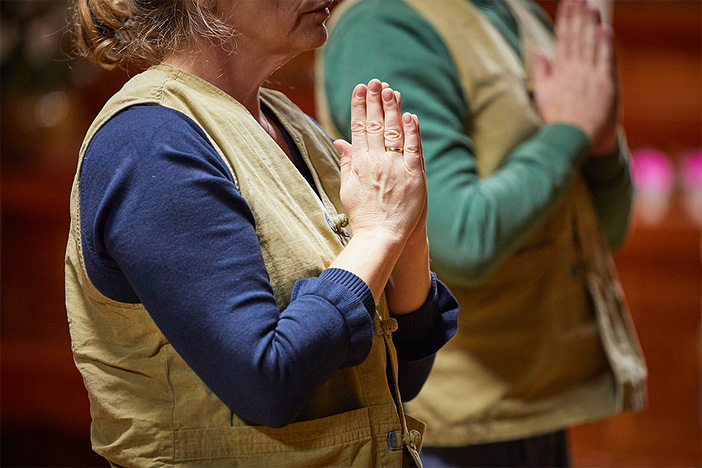
Templestay introduction
Templestay is a unique opportunity to experience Korean Buddhism, its daily lifestyle, rituals and spirituality. It generally entails staying at a Buddhist temple and engaging in daily monastic activities. Today, templestay is considered one of the most popular programs among locals and foreigners for experiencing Korean Buddhism.
Templestay is a wonderful way to recharge oneself. The sound of wind chimes resonates within the tranquil temple grounds, rendering peace in the hearts of temple visitors. A templestay program provides sanctuary from city life, as well as time and space for meditation and relaxation.



